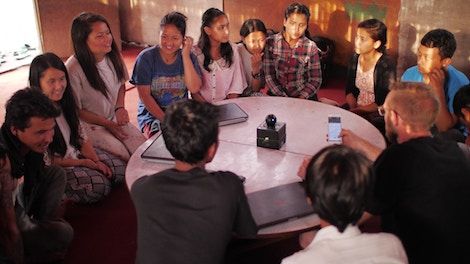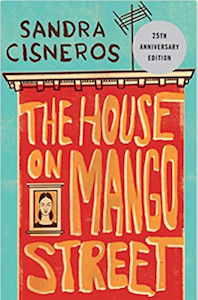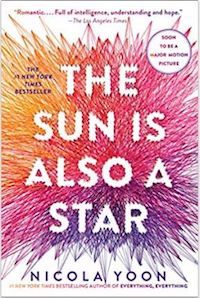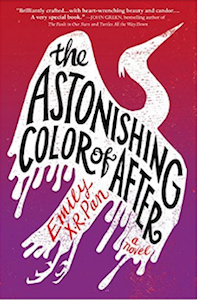
Stories for Creative Writing Classes With Kids: What I Shared With My Students
After moving from Hawai‘i to California, my partner found a local arts center during our first month in the East Bay. He shared the glare of his phone, and I jotted down the contact information. In the hellscape of late 2016, I, a full-time freelancer, yearned for a steady paycheck, but I also wanted to share my passions of reading, writing, and community. That night, I cold-emailed the arts manager to pitch accessible creative workshops for children that would inspire, develop, and nurture a love of writing and contemporary literature.
To my joy, she accepted. For two years, I taught creative writing classes for ages eight to seventeen. Sometimes a five- or seven-year-old would enroll with my ecstatic permission. It is difficult for me to say no to a child who loves words. I taught Wednesday nights, after my day job. When I quit in anticipation of our relocation, I taught a final class on Tuesday and Thursday afternoons.
Reasonably priced with scholarships available, I designed the workshops, ranging from introductory classes, such as Fiction Fundamentals and Practicing Poetry, to classes based on shared obsessions, like Creating (Un)Believable(!) Characters, Genre Bending, and Writing in Small Forms. Let me reminisce with some popular pieces and excerpts that inspired our writing and discussions.
The Bullfighter Checks Her Makeup by Susan Orlean
by Susan Orlean
This book was staple in my teaching life. I shared a selection of profiles with my English 101 students to discuss ledes, and I shared “The Maui Surfer Girls” with my creative writing students to discuss sensory details. A glimpse of both: “The Maui surfer girls love one another’s hair. It is awesome hair, long and bleached by the sun, and it falls over their shoulders straight, like water, or in squiggles, like seaweed, or in waves.”
“The Handsomest Drowned Man in the World” by Gabriel García Márquez
In my first class, I read this short story to a room with twenty-something students sitting beneath an outstretched papier-mâché dragon. Under the spell of good storytelling, the room was a collective held breath. Then, at its finish, a bunch of raised hands.
I’ll never get over the wondrous and the mundane of García Márquez’s story. See: “They thought that if that magnificent man had lived in the village, his house would have had the widest doors, the highest ceiling, and the strongest floor, his bedstead would have been made from a midship frame held together by iron bolts, and his wife would have been the happiest woman. They thought that he would have had so much authority that he could have drawn fish out of the sea simply by calling their names and that he would have put so much work into his land that springs would have burst forth from among the rocks so that he would have been able to plant flowers on the cliffs. They secretly compared him to their own men, thinking that for all their lives theirs were incapable of doing what he could do in one night, and they ended up dismissing them deep in their hearts as the weakest, meanest and most useless creatures on earth.”
 “My Name” by Sandra Cisneros
“My Name” by Sandra Cisneros
I often share vignettes from The House on Mango Street, a formative book for me.
A few lines from a favorite: “In English my name means hope. In Spanish it means too many letters. It means sadness, it means waiting.” Cisneros’ “My Name” transports me to times when I asked my mother to spell my middle names and explain their origins, when I slumped during roll call. It still speaks to me, the me who endlessly explains my name to strangers in person and at the other end of the phone.
“Girl” by Jamaica Kincaid
After I read “Girl” to the class, we discussed sentences. How long ones can steal your breath. With Kincaid in mind, we wrote flash pieces featuring someone close to us or our protagonist trying to teach us or them something. One of the many amazing things about “Girl” is how the writer does so much with such little space: “this is how you iron your father’s khaki shirt so that it doesn’t have a crease; this is how you iron your father’s khaki pants so that they don’t have a crease; this is how you grow okra—far from the house, because okra tree harbors red ants…”
The Sun Is Also a Star by Nicola Yoon
by Nicola Yoon
I finished this novel in twenty-nine hours, kept reading past two am because I could not stop wondering about Daniel and Natasha’s young love, regret, disappointment, the poverty Daniel’s father escaped and tries to protect his sons from, the love story in science and the science in poetry, the largest meteorite. I shared the first pages with my second summer class to talk about voice and voices. That night, a student bought the novel to discover what happened to Daniel, whose “older brother, firstborn son of a firstborn son, surprised my parents (and all their friends, and the entire gossiping Korean community of Flushing, New York) by getting kicked out of Harvard University (Best School, my mother said, when his acceptance letter arrived). Now he’s been kicked out of Best School, and all summer my mom frowns and doesn’t quite believe and doesn’t quite understand.”
A Wrinkle in Time by Madeleine L’Engle
by Madeleine L’Engle
Often, we focused on beginnings and endings, and I used the first and last lines of the books on my nightstand: To All the Boys I’ve Loved Before by Jenny Han, The Astonishing Color of After by Emily X.R. Pan, The Hate U Give by Angie Thomas. It feels important to share living writers with students. Like me, sometimes they see the same titles again and again over the span of their education. At the same time, it gelled my heart to see so many of them recognize the first line of the first installment of the Time Quintet: “It was a dark and stormy night.”




 “My Name” by Sandra Cisneros
“My Name” by Sandra Cisneros















